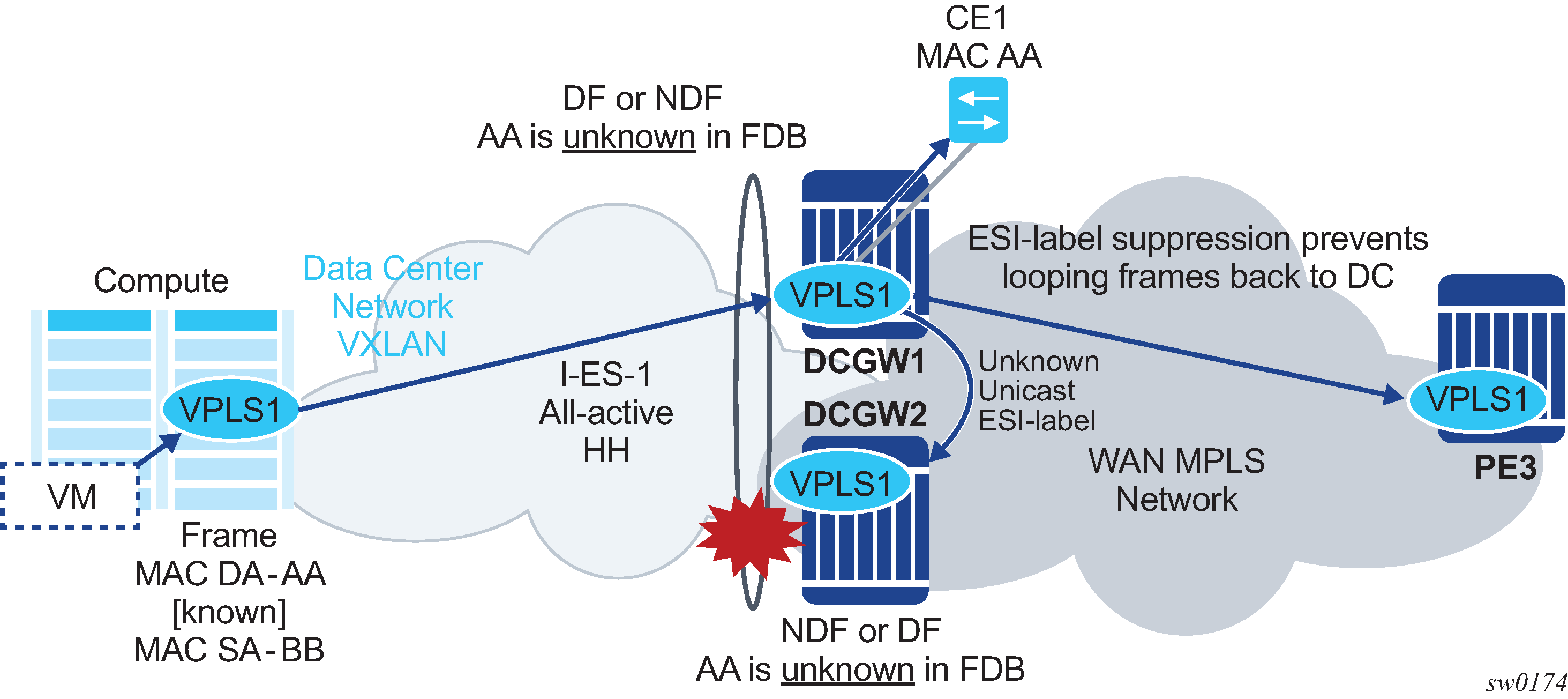The same considerations for ES and AD routes, and DF election apply for all-active multi-homing as for single-active multi-homing; the difference is in the behavior on the NDF DGW. The NDF for a specified service performs the following tasks.
From a data path perspective, the NDF blocks ingress and egress paths for broadcast and multicast traffic on the VXLAN instance bindings associated with the I-ES, while unknown and known unicast traffic is still allowed. The unknown unicast traffic is transmitted on the NDF if there is no risk of duplication. For example, unknown unicast packets are transmitted on the NDF if they do not have an ESI label, do not have an EVPN BUM label, and they pass a MAC SA suppression. In the example in Figure 1, the NDF transmits unknown unicast traffic. Regardless of whether DC GW1 is a DF or NDF, it accepts the unknown unicast packets and floods to local SAPs and EVPN destinations. When sending to DGW2, the router sends the ESI-label identifying the I-ES. Because of the ESI-label suppression, DGW2 does not send unknown traffic back to the DC.
Figure 1. All-active Multi-Homing and Unknown Unicast on the NDF
MAC/IP routes and the FDB process
MAC/IP routes associated with the VXLAN instance are advertised normally.
MACs are installed as normal in the FDB for received MAC/IP routes associated with the VXLAN instance.
IMET routes process
As is the case for single-active multi-homing, IMET-AR-R routes must be withdrawn on the NDF (MhStandby state). Only the DF advertises the IMET-AR-R routes.
The IMET-IR advertisements in the case of the NDF (or MhStandby) are controlled by the command config>service>vpls>bgp-evpn>vxlan [no] send-imet-ir-on-ndf, as in single-active multi-homing.
The behavior on the non-DF for BUM traffic can also be controlled by the command config>service>vpls>vxlan>rx-discard-on-ndf {bm | bum | none}, where the default option is bm. However, the user can change this option to discard all BUM traffic, or forward all BUM traffic (none).
The I-ES DF PE for the service continues advertising IMET and MAC/IP routes for the associated VXLAN instance as usual. When the DF DGW receives BUM traffic, it sends the traffic with the egress ESI label if needed.